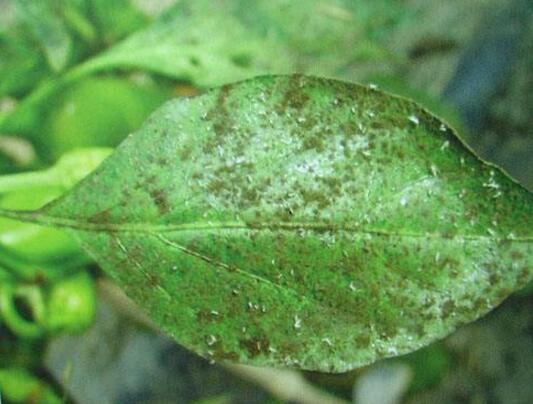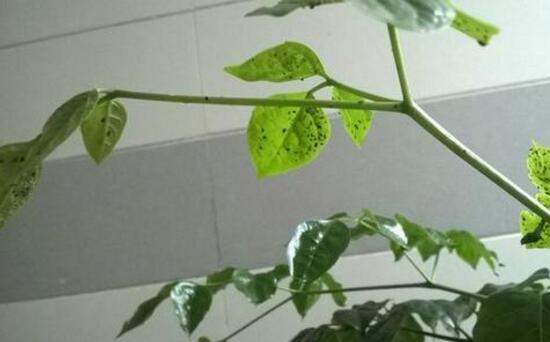What about the long bugs of peppermint flowers? pest control of mint flowers / 2 insect pests 2 diseases
In the process of cultivating peppermint, what people are most afraid of is the situation of diseases and insect pests, because many people do not know much about this kind of situation, so they are often at a loss when they appear. What about the long bugs of peppermint? what do you need to do to prevent and control peppermint diseases and insect pests? In the following detailed introduction, the following editor to take you to understand.

What about the mint bugs?
If we want to know what to do with peppermint worms, we first need to understand what kind of diseases and insect pests appear, just like curing diseases. Only when we understand the cause can we prescribe the right medicine. In the following, we can learn about the symptoms of all kinds of diseases and insect pests and the prevention and control methods of mint diseases and insect pests.
II. Disease and pest control of peppermint
1. Small land tiger pest
Symptoms: the small land tiger is also known as the soil silkworm, it is a kind of silkworm insects, its body surface is black, and it is easy to appear in a humid environment, so we must pay special attention to this pest at this time. This pest mainly harms the seedlings of peppermint. It will gradually cause the tender leaves of the seedlings, and finally lead to the loss of nutrients in the mint, thus withering to death.
Prevention and control methods: because the seedlings are relatively fragile, we must control them as soon as possible. to deal with this pest, we can choose 40% chrysanthemum EC 2000, 000, 000 times the solution to directly spray.
two。 Spodoptera litura pest
Symptoms: in the prevention and control of peppermint diseases and insect pests, Spodoptera litura is a common pest, it mainly harms the leaves of mint, it will gradually absorb the juice, which leads to the yellowing and shedding of the leaves, which is a great harmful pest.
Control methods: to deal with this pest, we can use 2500 times of imidacloprid wettable powder to spray, usually about 20 days to spray once, 1-2 times after the basic elimination of this pest.
3. Rust disease
Symptoms: rust is a plant disease caused by fungi, which mainly harms the leaves, stems and fruits of peppermint. At the beginning of the disease, there are many different color blister spots on the leaves, which will gradually spread with the passage of events, resulting in the gradual death of mint.
Control method: this disease spreads very quickly, so we must deal with it as soon as possible, if it is too late, it will be difficult to cure it. For this disease, we can choose the 1500 times solution of 25% vermicellin 1000 Murray to spray and control the plant.
4. Spot blight disease
Symptoms: spot blight is a common disease in the prevention and control of peppermint diseases and insect pests, and the high incidence period is from July to September, so it must be noted that this disease will appear many brown spots on the leaves when it comes on. With the passage of time, the spot will gradually spread, and the color will gradually turn black, which will eventually lead to mint wilting and death.
Prevention and control methods: we had better control this disease in the early and middle stages, but we can not control it basically in the later stage. In the early and middle stages, we can choose to spray the diseased plants with 65% Daimen zinc 400 times 500 times. Generally, it is sprayed once every 10-15 days, and it can be basically cured after 2-3 times.
What is the language of peppermint, the legend of peppermint / love that will never die
Peppermint is a kind of flower that does not look elegant, but it is also loved by many people because of its elegant temperament. Like many flowers and plants, peppermint has its own language. What are the flower words about peppermint and what are the legends of peppermint? Next, the editor will take you to learn about it.
What is the flower language of peppermint
1. Love that will never die
What is the flower language about peppermint, in fact, it is also related to love, its flower language is "love that will never die", which means that true love is everlasting and will never dissipate. Peppermint is also loved by many lovers who are passionately in love.
two。 I would like to meet you again
In addition to the love that never dies, peppermint has another kind of language that wishes to meet you again, indicating that love becomes destiny only because of the encounter of fate.
II. Legend of peppermint
The myth and legend of peppermint first originated in Greece. it is said that a long time ago, the god of the underworld, Puldo, fell in love with the elf mint of the sea, but Purdo had a wife, and this thing was also known by his wife. his wife turned peppermint into a flower because of its extreme, which emits a fresh fragrance and represents love that will never die.
Third, the flower language of mint of different colors
1. White mint: love that will never die
two。 Red mint: love me again
3. Pink mint: may I meet you again
4. Purple mint: a symbol of virtue
Introduction to the propagation mode of mint and summary of its disease prevention.
How much do you know about mints? Mint flowers are petite and lovely, with a faint fragrance, and are deeply loved by people. However, many friends are troubled by the disease prevention and control of peppermint grown in their own homes. Today, I will take you to understand the introduction of the breeding mode of mint, as well as the summary of its disease prevention.
The mode of propagation of mint
In production, it is mainly propagated by rhizomes or seedlings. Peppermint is mainly propagated by separate plants and cuttings, and the stolons of the mother plant are cut off in the first and middle of April and planted respectively. Peppermint can also dig sturdy, white rhizomes, cut into 6-10 cm long, after planting covered with soil about 3 cm, about 15-20 days to sprout. Sowing is carried out in spring or autumn, peppermint takes 80-100 days from germination to flowering, grows slowly at the initial stage after germination, and accelerates after 2-3 weeks. In order to maintain good growth, it is best to update it every year. During the growth period, more nitrogen fertilizer is needed, properly combined with phosphorus and potassium fertilizer, and a large amount of water is needed at the same time. If there is harm to a small land tiger, it should be prevented and controlled in time.
Most of mint is cultivated in open field, and protected field cultivation or both open field and protected field cultivation can be adopted in the north. The cultivation season depends on the local climate and can be cultivated in the frost-free season. The protected field can be produced every year, and the open field in the north can be cultivated from April to October.
Rhizome propagation from late October to early November, dig up the rhizome from the seed land, select the white, sturdy, short Internode, cut into small segments of 10cm, and then plant into the deep trench of pre-dug 10cm, row spacing 25--30cm, plant spacing 15cm. After planting, cover with fine soil and rake flat and compacted.
Seedling propagation
The fields with sturdy plants, consistent growth and no diseases and insect pests were selected as seed plots. After autumn harvest, immediately ploughing, weeding and topdressing once. In the first ten days of April of the following year, when the seedling was high and 15cm, the seedlings were pulled out and transplanted. Two seedlings were planted in each hole according to row spacing 20cm and plant spacing 15cm. After planting, the soil is compacted, and then poured with thin dung water.
Disease control of peppermint
Rust disease
Damage to leaves and stems occurs frequently in rainy seasons. In addition to strengthening the field management and improving the ventilation and light transmission conditions, the prevention and control methods can be sprayed with 25% trimethoprim 1000 Mir 1500 times liquid blade spray.
Spot blight (also known as white star disease)
Damage to the leaves occurred in 5-October. In the early stage of the disease, remove and burn in time or spray with 75% chlorothalonil 500 Mel 700 times liquid.
The main pests are small land tiger and Spodoptera litura. The small land tiger can spray the rhizosphere with 40% chrysanthemum horse EC and chrysanthemum EC 2000Mel 3000 times, or irrigate the roots with 40% methyl isosaliphate 1000 times solution. Spodoptera litura can be sprayed with 50% Yitaibao EC 30--60ml per mu or 1000 times of 50% fenitrothion.
The above is the introduction of the breeding methods of peppermint, as well as the summary of its disease prevention. I hope it can be helpful to the majority of flower friends. Please continue to pay attention to the succulent flower bed and learn more about flower conservation.
- Prev

What should we do when the white palm grows insects? control of common diseases and insect pests of white palm / 6 simple measures
The harm of diseases and insect pests to plants is very great, so when planting white palm, we must pay attention to the problem of diseases and insect pests. What should we do if white palm grows insects? Today, the editor will take you to learn more about the prevention and control of common diseases and insect pests in white palm.
- Next

Happy tree long insects how to do, happy tree pest control/3 pests 3 diseases
As a good and beautiful plant, happiness tree is welcomed and loved by the majority of flower friends, and many people plant it at home. However, due to improper maintenance and other reasons, the happiness tree will grow insects and get sick, thus seriously affecting its ornamental nature. What should I do if the happiness tree grows insects?
Related
- Fuxing push coffee new agricultural production and marketing class: lack of small-scale processing plants
- Jujube rice field leisure farm deep ploughing Yilan for five years to create a space for organic food and play
- Nongyu Farm-A trial of organic papaya for brave women with advanced technology
- Four points for attention in the prevention and control of diseases and insect pests of edible fungi
- How to add nutrient solution to Edible Fungi
- Is there any good way to control edible fungus mites?
- Open Inoculation Technology of Edible Fungi
- Is there any clever way to use fertilizer for edible fungus in winter?
- What agents are used to kill the pathogens of edible fungi in the mushroom shed?
- Rapid drying of Edible Fungi

